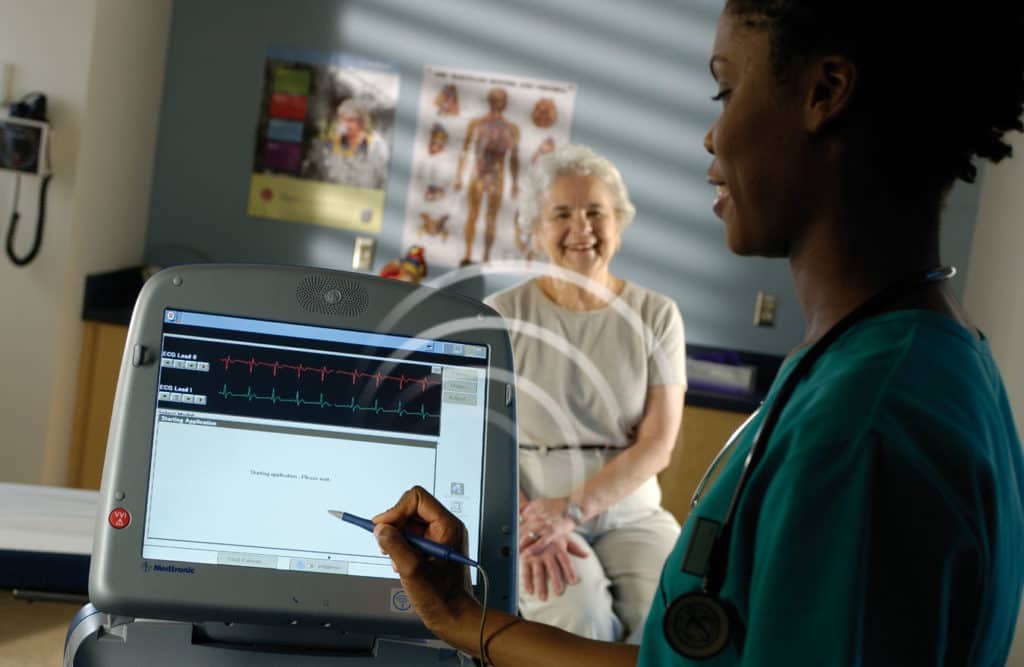Pacemaker ICD/Check
Patients with a permanent pacemaker or ICD need to have the device checked at regular intervals to ensure that it is functioning appropriately and to monitor the length of life remaining in the generator. Such checks are usually performed at six monthly or annual intervals, after an initial check four to six weeks after implantation. Pacemakers and ICDs store information about the heart rhythm in between checks, which when downloaded can be useful for the doctor, as it may indicate that adjustments to medication are required.
The check itself takes between 15 and 45 minutes depending on the type of device implanted, and involves lying on a couch with ECG electrodes attached to the wrists and ankles, and a programmer placed over the site of the device. The technician will be looking at five main aspects, namely:
1. Its ability to sense, i.e. to detect when the heart is beating abnormally and kick in at that stage, but leave the heart alone when it is functioning normally;
2. The lead thresholds, to ensure that the minimum amount of energy necessary is being delivered from the generator to the leads in the chambers of the heart, so that pacing is consistent and battery life is maximised;
3. The programming of the device, so that the parameters set within the pacemaker correspond to the patient’s daily routine;
4. Any changes in heart rhythm and, in the case of ICDs, whether any shocks have been delivered to terminate dangerous heart rhythms such as VF (ventricular fibrillation) and VT (ventricular tachycardia);
5. The remaining battery life.
Most pacemaker batteries last between five and ten years, depending on how much the pacemaker is used; patients who are pacing dependent, i.e. where the pacemaker is pacing the heart 100% of the time, should expect to require a generator change earlier than someone whose pacemaker only “kicks in” intermittently. During a pacemaker check, the technician will be able to give an estimate about how long the battery is due to last, and a generator replacement will be arranged accordingly; for this a patient will be admitted to hospital for a few hours and the battery will be replaced under a local anaesthetic – the pacing leads themselves stay in position, provided they are still functioning normally.

Related links:
Symptoms - Palpitations, dizzy spells and
blackouts
Palpitations are a common symptom that may or may not signify an important underlying heart problem. Read more
Conditions - Heart Failure
Heart failure develops when the heart can no longer adequately perform its function, which is to pump blood efficiently around the body. Read more
Tests - ECG Monitoring
There are several different types of ECG monitoring, chosen based on symptoms or the condition in question. Read more
Treatments - Defibrillator/ICD
The implantable cardioverter-defibrillator (ICD) has added a whole new dimension to the management of dangerous heart rhythms, such as ventricular tachycardia (VT) and ventricular fibrillation (VF), which might otherwise be fatal. Read more
Treatments - Pacemaker
The first pacemakers were developed in the 1930s and the first use in man was in the 1950s. Back then they were bulky, crude and very limited in function. Read more